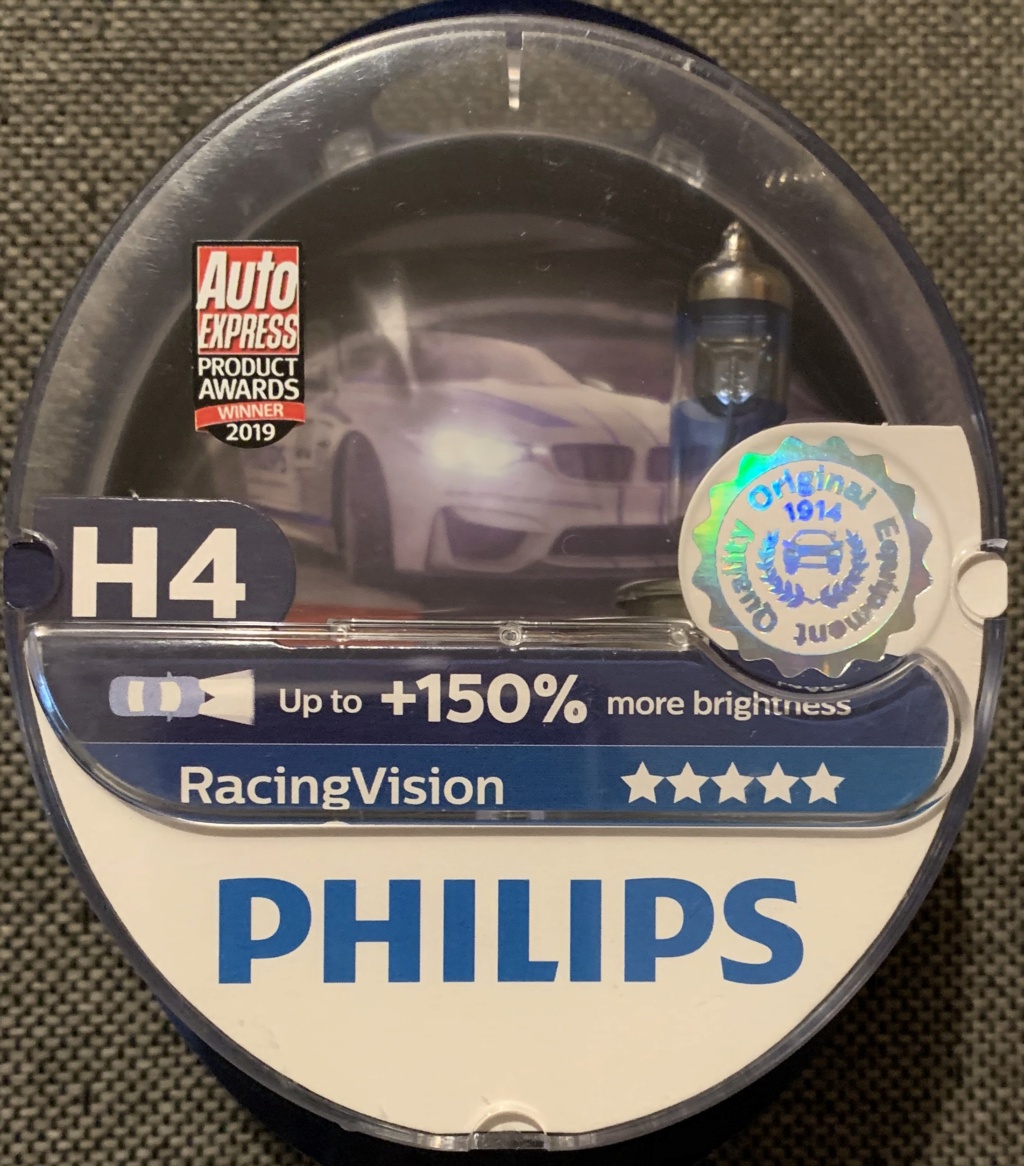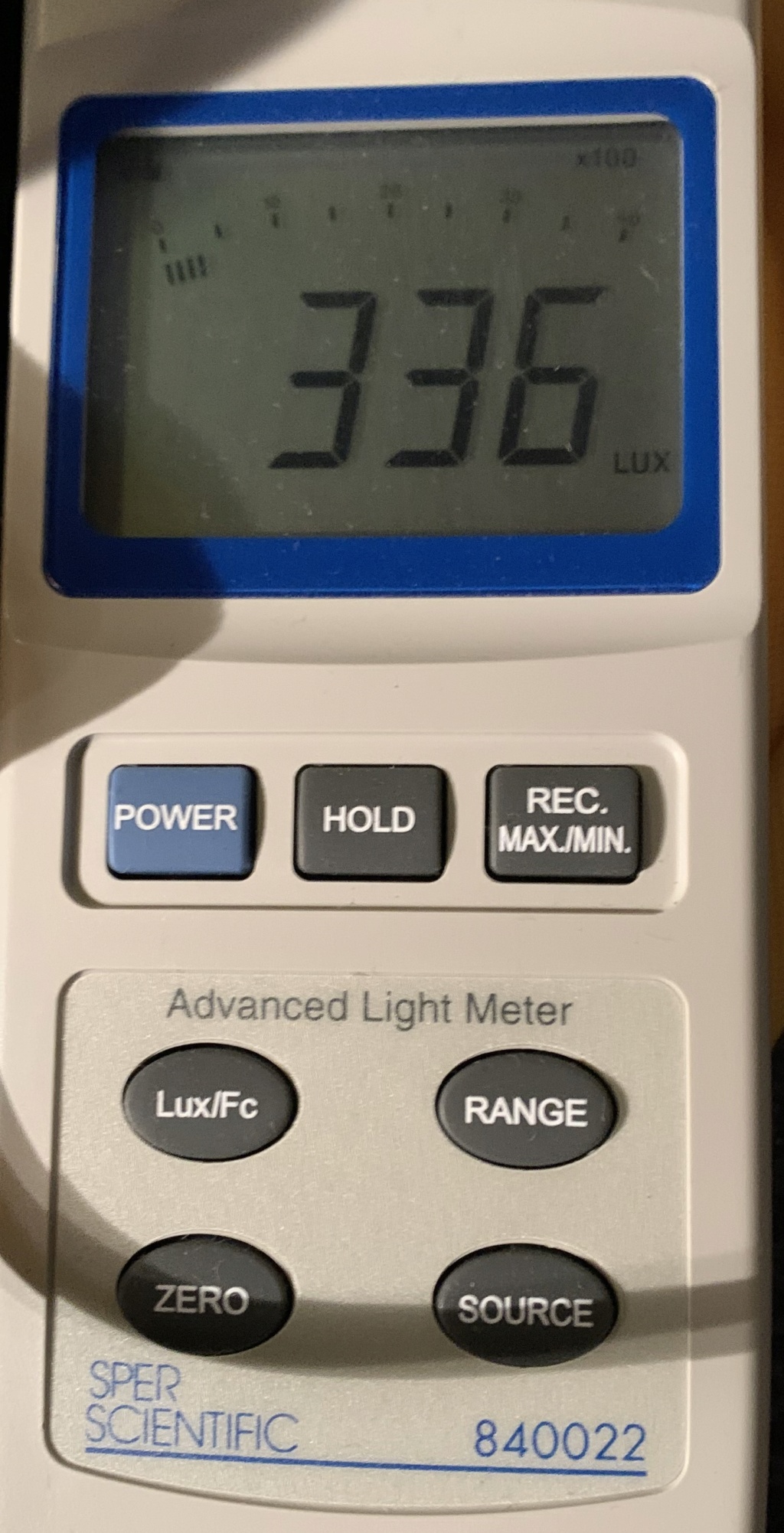Last few weekends I was caught out riding after dark, and was underwhelmed by the headlight intensity. I started looking around for an alternative, focusing on the Cyclops LED bulb, and the JNS Engineering replacement headlight.
From what I had read, the Cyclops is hampered by the OEM lens shape, and I could not find much feedback on the JNS Engineering headlight. I therefore decided to try a better quality conventional halogen bulb first, choosing the Philips RacingVision that claims to be up to 150% brighter than regular bulbs:

and here is the OEM bulb (on the left) vs. the Philips:

One can clearly see how much slimmer the Philips bulb is, and the attempt to shift the projected light to a whiter spectrum by having some blue bands around the bulb.
Don't know whether the size of the bulb is the culprit, but it turns out that the beam pattern of the Philips bulb is different than the OEM one. This presented a measurement problem: should the sensor remain stationary, measuring the brightness of each bulb at a fixed position, or should the sensor be re-positioned in order to capture the maximum brightness of each bulb?
There are pros and cons to each method, all revolving around the issue of better road illumination, or better driver awareness of an approaching motorcycle (not that these two issues are mutually exclusive). Not wanting to open a can of worms here, I decided to measure the bulbs both ways.
A note about the units used: most people are familiar with Lumens, which is the total quantity of visible light per second; light meters measure in Lux, which is Lumens per surface area. In principle, if one knows the distance of the light source to the sensor, one could convert Lux to Lumens (and vice-versa), but in order to do this, one assumes that:
1) The light source shines uniformly in all directions, which is obviously not true for headlights since the projected beam is very narrow
2) Even in that narrow window, the beam pattern is not uniform
So the measurements below are just relative to each other, and one should not try to match them to published lumen figures from manufacturers.
First up is the OEM bulb with the sensor centered on the bulb, at a distance of about 50 cm, and recording 26k lux:

Replacing it with the Philips bulb and keeping the sensor at the same position, gave a modest jump in brightness of about 15% at almost 30k lux:

However, I could see that the Philips beam pattern was shifted a little bit to the upper left compared to the OEM, so repeating the measurements with now trying to position the sensor to capture the maximum brightness, produced a figure of 33.6k lux for the OEM:

and 43.1k lux for the Philips, an increase of almost 30%:

Subjectively speaking I could clearly see that the Philips bulb is brighter, but within the confines of my garage I cannot predict how this would translate to illuminating the road ahead. Hopefully I will be able to determine this next weekend, after the rains have subsided around here.
